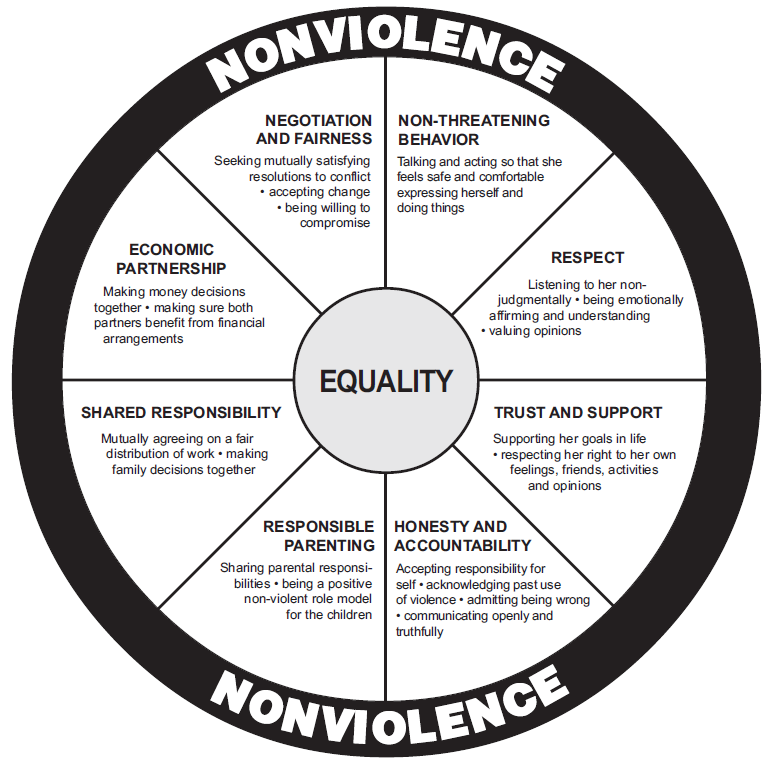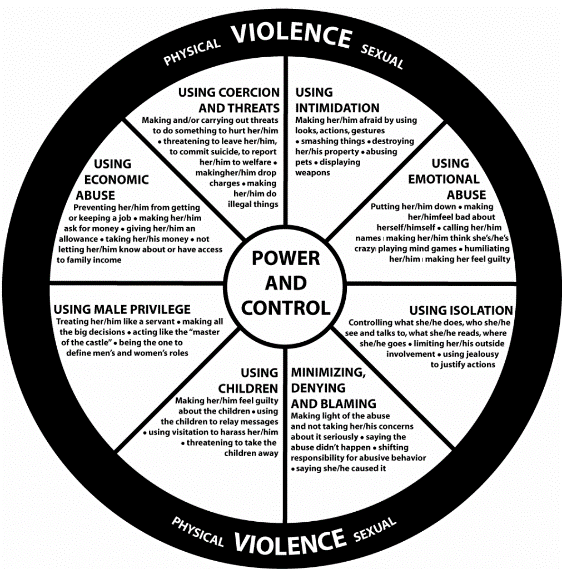Am I Being Abused?
"40% of female murder victims are killed by intimate partners"
Domestic abuse
Domestic abuse is a pattern of behaviour in a relationship that is used to gain or maintain power and control over an intimate partner. It occurs when one person attempts to physically or psychologically dominate another person.
Domestic violence is a human rights violation:
- The right to life
- The right to feel safe and be safe
- The right to freedom that all people in the world are entitled to have
- The highest attainable standard of physical and mental health
- The right to decent work
- The right to safe housing
- Freedom of expression and the right to hold opinions without interference
- The right to access to social, health and legal services
- A child or young person’s right to leisure and play
- The right to education
- The right to be free from torture and other cruel, inhuman or degrading treatment or punishment
There are several forms of abuse and they can occur separately or combined:
- Physical abuse
- Emotional/psychological abuse
- Sexual abuse
- Financial abuse
Physical Abuse
Assault and physical attacks involve a range of behavior:
- Hitting, punching, kicking, pushing, slapping, strangling, smothering, hair-pulling, shoving
- Using or threatening to use weapons
- Interrupting victim’s sleep
- Throwing things, destroying property
- Hurting or killing pets
- Denying medical treatment
It can range from a lack of consideration for victim’s physical comfort to causing permanent injury or death.
Emotional Abuse
This type of abuse can be verbal or nonverbal. The abuser aims to chip away at the confidence and independence of victims with the intention of making her compliant and limiting her ability to leave. It is a very effective tactic used by abusive partners to obtain power and control and it can cause extreme damage to the victim’s self-esteem. Commonly, emotional abuse makes the victim feel like they are responsible for the abuse and to feel crazy, worthless and hopeless. Emotional/psychological abuse includes:
- Solution, intimidation, threats of violence and controlling behavior
- Yelling, name-calling, blaming and shaming
- Constant put downs or criticisms, acting superior,
- Threatening and making victims feel fearful, excessive jealously, accusing victim of having affairs
- Minimizing the abuse or blaming the victim for their own behavior
Sexual Abuse
Coercing or attempting to coerce any sexual contact or behavior without consent. Sexual abuse includes, but is certainly not limited to:
- Marital rape, physically forcing sex, forcing sex after physical violence has occurred
- Attacks on sexual parts of the body,
- Treating one in a sexually demeaning manner
- Forcing sex with other partners, forcing to participate in demeaning or degrading sexual acts, violence or name calling during sex
- Denying contraception or protection from sexually transmitted diseases
- Forcing to perform sexual acts that cause pain or humiliation, causing injury to her sexual organs
Financial/Economic Abuse
This form of abuse is one of the least commonly known but likely the most powerful tactic of entrapping a victim in the abusive relationship.
It is defined as making or attempting to make an individual financially dependent on the abuser. Some forms of financial abuse include:
- Maintaining total control over financial resources, withholding one’s access to money
- Giving allowance, not letting the victim have their own money
- Hiding family assets, running up debt
- Forbidding one’s attendance at school or employment
The Power and Control Wheel and the Equality Wheel –
Developed by the Domestic Abuse Intervention Project in Duluth Minnesota. One is about power and destructive relationships. The other is about equality and respect.


Mission Statement
The Cayman Islands Crisis Centre is a charitable organization that provides support to all victims of domestic abuse via various services and programmes focusing on domestic and sexual abuse.
Subscribe to Our Newsletter
GET IN TOUCH
CICC offices : 949-0366
Toll Free : 1-800-534-2422
CICC Director : ania.milanowska@cicc.ky
CICC Office : info@cicc.ky
Website Created & Developed by Creative Muse
Copyright @ 2023 Cayman Islands Crisis Centre, All rights reserved.
